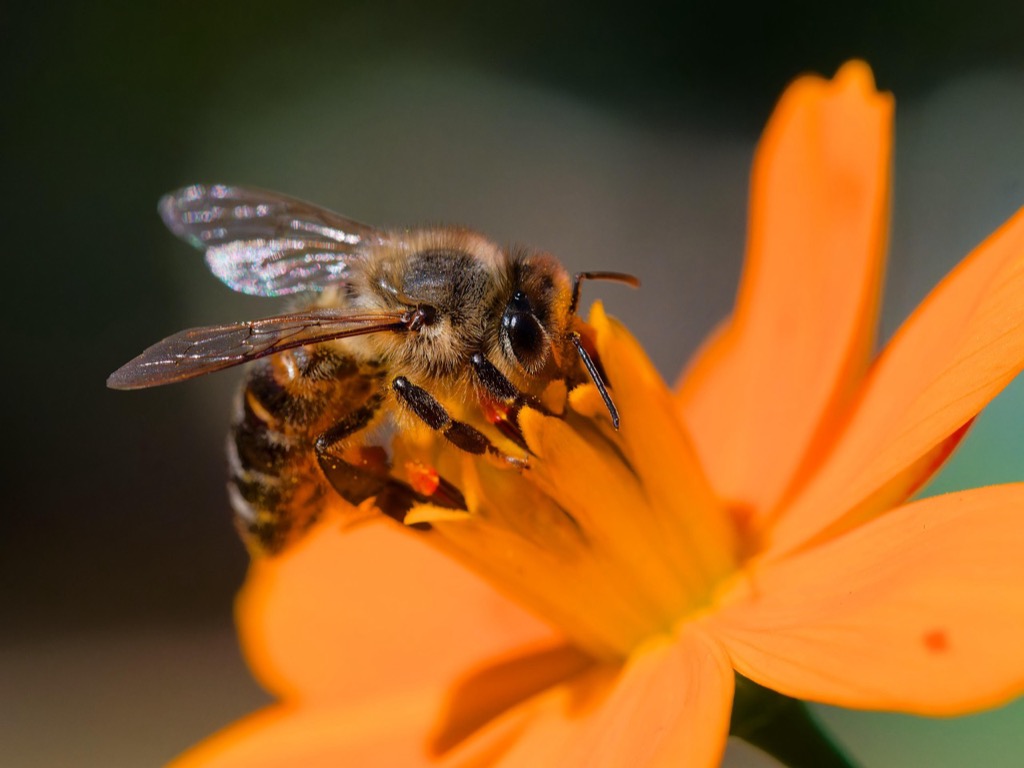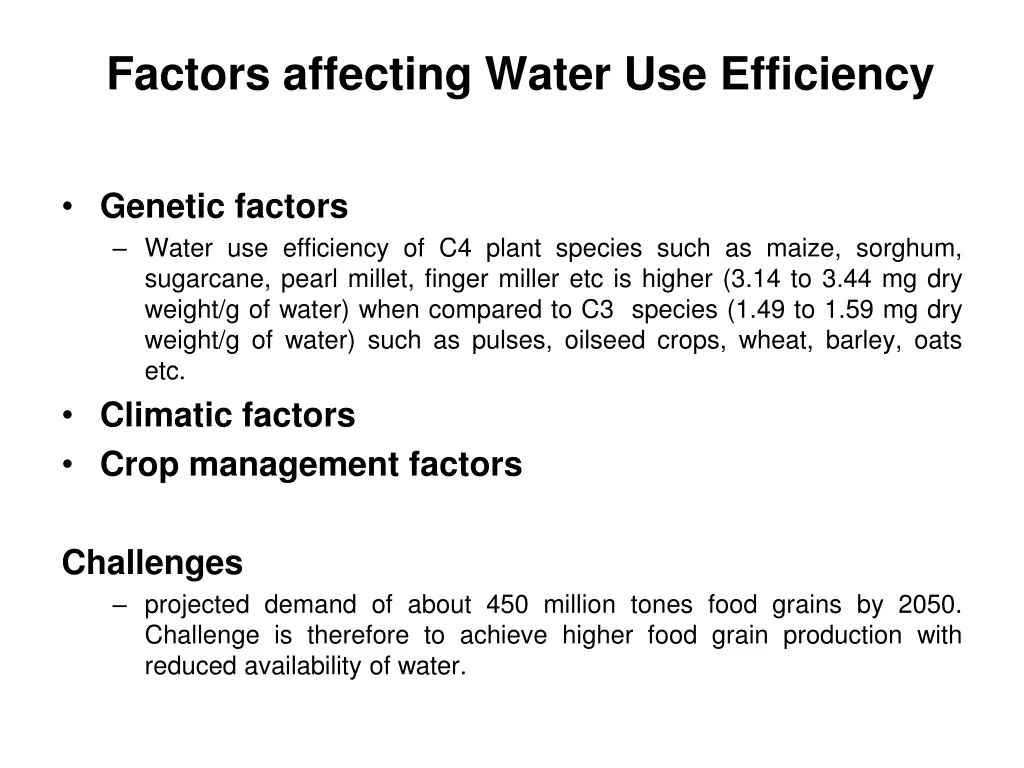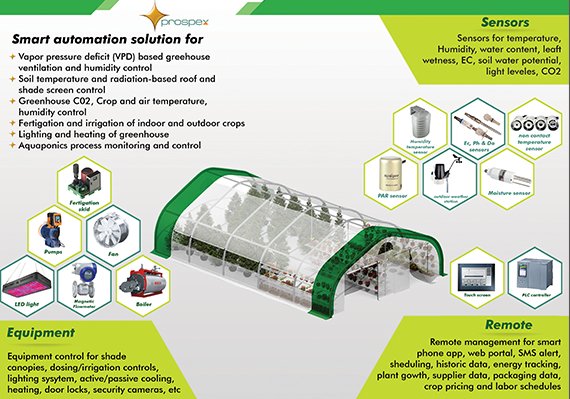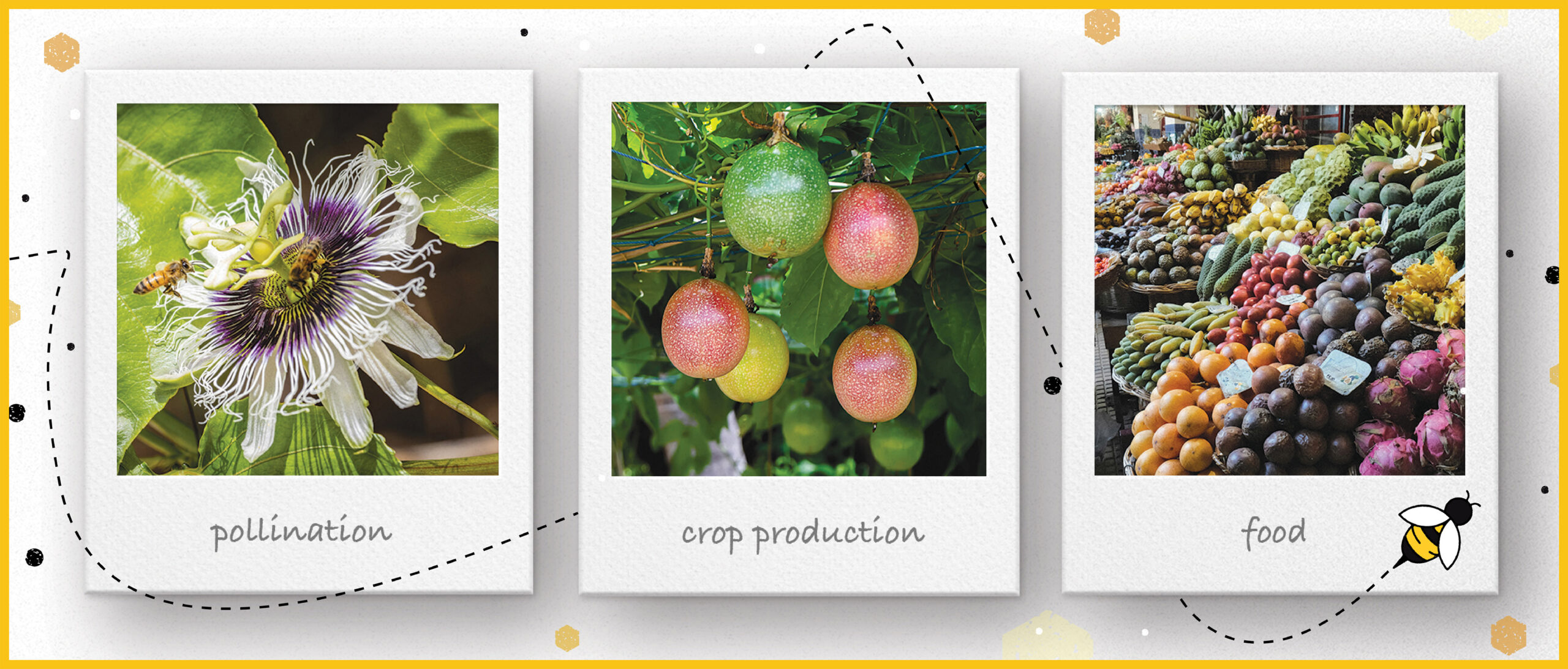
Boosting Blooms and Buzz: A Farmer’s Guide to Attracting Native Pollinators
The hum of bees, the flutter of butterflies, the silent work of beetles – these are the sounds and sights of a healthy ecosystem. And for farmers, they represent something even more vital: pollination. Without these tireless workers, many of our crops would fail, leading to significant economic losses and impacting our food security. This article dives deep into the world of native pollinators and provides actionable strategies for farmers to attract and support these essential creatures, fostering thriving farms and resilient ecosystems.
The Critical Role of Native Pollinators
Pollination is the cornerstone of agricultural productivity for many crops. While honeybees often take center stage, native pollinators – a diverse group including bees, butterflies, moths, flies, beetles, and even hummingbirds – are often more efficient pollinators for specific plants. They’re perfectly adapted to the local flora, and their presence often results in higher yields and better quality produce. In fact, research indicates that native pollinators contribute billions of dollars annually to the global agricultural economy.
Unfortunately, these vital creatures are facing numerous threats. Habitat loss, pesticide use, climate change, and diseases are taking a heavy toll, leading to population declines in many regions. Protecting and supporting native pollinators is not just an environmental imperative; it’s also a smart business decision for farmers who want to ensure the long-term health and productivity of their operations.
Why Native Pollinators Matter More Than You Think
- Efficiency: Native pollinators are often better suited to pollinate specific crops than honeybees, leading to improved fruit and seed set.
- Diversity: A diverse pollinator community is more resilient to environmental stressors and can ensure pollination even when some species are struggling.
- Resilience: Supporting native pollinators can enhance the overall health and resilience of your farm ecosystem.
- Economic Benefits: Increased yields, improved crop quality, and reduced reliance on managed pollination services translate into significant financial advantages.
Creating Pollinator-Friendly Habitats on Your Farm
The key to attracting native pollinators lies in providing them with the resources they need to thrive: food, shelter, and a safe environment. Fortunately, there are many practical steps farmers can take to create pollinator-friendly habitats, often integrating these practices seamlessly into existing farming operations.
1. Planting a Diverse Range of Flowering Plants
This is arguably the most crucial step. Native pollinators rely on a continuous supply of nectar and pollen throughout the growing season. Planting a variety of flowering plants that bloom at different times ensures that pollinators have a consistent food source. Consider the following:
- Native wildflowers: These are often the best choice, as they are adapted to the local climate and provide the most suitable food and shelter for native pollinators. Research your local native plant species and choose those that are beneficial for pollinators.
- Cover crops: Certain cover crops, like clover, alfalfa, and buckwheat, are excellent sources of nectar and pollen and can also improve soil health.
- Crop diversification: Planting a mix of crops that bloom at different times can extend the flowering season and provide a continuous food source.
- Avoid single-crop plantings: Monoculture farming systems offer limited resources for pollinators.
2. Providing Shelter and Nesting Sites
Pollinators need safe places to rest, reproduce, and escape harsh weather conditions. Here’s how to provide shelter:
- Create hedgerows: Planting hedgerows (rows of shrubs and trees) along field edges provides shelter, nesting sites, and travel corridors for pollinators.
- Leave areas unmanaged: Allow some areas of your farm to remain uncultivated, such as field margins, ditch banks, and areas with native vegetation.
- Build bee hotels: Provide nesting sites for solitary bees by creating bee hotels. These can be as simple as wooden blocks drilled with holes of varying sizes.
- Leave dead wood: Many insects, including some pollinators, nest in dead wood.
- Maintain undisturbed soil: Avoid excessive tilling, which can destroy ground-nesting bee nests.
3. Minimizing Pesticide Use
Pesticides are a major threat to pollinators. Even pesticides that are not directly applied to crops can harm pollinators through drift, residual effects, and contamination of pollen and nectar. Consider the following:
- Integrated Pest Management (IPM): Implement IPM strategies that prioritize prevention, monitoring, and the use of less-toxic pest control methods.
- Targeted pesticide applications: Apply pesticides only when necessary and target them specifically to the pests, avoiding broad-spectrum applications.
- Choose less-toxic pesticides: If pesticides are necessary, select those that are less harmful to pollinators and apply them at times when pollinators are less active (e.g., early morning or late evening).
- Avoid neonicotinoids: Neonicotinoid insecticides have been linked to pollinator declines and should be avoided whenever possible.
- Read labels carefully: Always follow label instructions and heed warnings about pollinator safety.
4. Providing Water Sources
Pollinators need access to clean water, especially during hot and dry periods. Here’s how to provide water:
- Shallow water sources: Create shallow water sources, such as bird baths, puddles, or dishes filled with pebbles or marbles.
- Watering plants: Water flowering plants regularly, especially during dry spells.
- Avoid standing water with mosquito control: Ensure that water sources do not become breeding grounds for mosquitoes by using appropriate mosquito control methods if necessary.
5. Managing the Landscape for Pollinator Connectivity
Pollinators need to be able to move freely across the landscape to find food, shelter, and mates. Consider the following:
- Connect habitats: Create corridors of habitat that connect different areas of your farm and surrounding landscapes.
- Collaborate with neighbors: Work with neighboring farmers and landowners to create larger, connected habitats.
- Reduce fragmentation: Minimize the fragmentation of habitats by avoiding large-scale clearing of vegetation.
Specific Strategies for Different Pollinator Groups
Different pollinators have different needs. Tailoring your practices to support specific pollinator groups can be highly effective.
Bees
Bees are among the most important pollinators. To support bees, focus on:
- Planting a wide variety of flowering plants: Include plants that bloom at different times of the year to provide a continuous food source.
- Providing nesting sites: Create bee hotels, leave areas of undisturbed soil, and provide access to dead wood.
- Minimizing pesticide use: Follow the guidelines outlined above.
Butterflies and Moths
Butterflies and moths are also important pollinators. To support them, focus on:
- Planting host plants: Butterflies and moths need specific plants for their larvae to feed on. Research the host plants for the butterflies and moths in your area and plant them.
- Providing nectar sources: Plant a variety of nectar-rich flowers that bloom throughout the growing season.
- Protecting overwintering sites: Leave leaf litter and tall grasses in place over the winter to provide shelter for overwintering butterflies and moths.
- Minimize pesticide use: Avoid pesticides, especially those that are broad-spectrum or target caterpillars.
Beetles
Beetles are often overlooked, but they are important pollinators, especially for crops like carrots and sunflowers. To support beetles, focus on:
- Providing a variety of flowering plants: Beetles are attracted to flowers with easy access to pollen and nectar.
- Leaving some areas undisturbed: Beetles need places to hide and reproduce.
- Avoiding pesticide use: Many pesticides are harmful to beetles.
Flies
Flies are often the most overlooked pollinators. To support flies, focus on:
- Planting a variety of flowering plants: Flies are attracted to a wide range of flowers, including those with simple, open structures.
- Providing access to water: Flies need access to water for drinking and breeding.
- Avoiding pesticides: Many pesticides are harmful to flies.
Monitoring and Evaluating Your Efforts
Tracking your progress and making adjustments as needed is essential for success. Here are some ways to monitor and evaluate your pollinator-friendly practices:
- Regular observation: Spend time observing your fields and surrounding areas to see which pollinators are present and how they are using the resources you provide.
- Planting records: Keep records of the plants you are planting and their flowering times.
- Insect surveys: Conduct insect surveys to identify the different species of pollinators on your farm.
- Yield monitoring: Track your crop yields to assess the impact of your pollinator-friendly practices.
- Consult with experts: Seek advice from local extension agents, conservation organizations, and entomologists.
Overcoming Challenges and Addressing Common Concerns
Implementing pollinator-friendly practices can sometimes present challenges. Here are some common concerns and how to address them:
Cost
The initial costs of planting native plants or building bee hotels may seem daunting. However, many cost-effective options are available, such as:
- Using cover crops: Cover crops can provide both pollinator habitat and soil health benefits.
- Purchasing native plants in bulk: Buying native plants in bulk can reduce costs.
- Utilizing existing resources: Use existing field margins and other unmanaged areas.
- Seeking grants and financial assistance: Many government agencies and conservation organizations offer grants and financial assistance for pollinator conservation projects.
Pest Control
Concern about increased pest pressure is a common concern when reducing pesticide use. Address this by:
- Implementing IPM strategies: Use IPM to monitor pest populations and apply targeted controls only when necessary.
- Promoting beneficial insects: Encourage the presence of natural enemies of pests, such as ladybugs and lacewings.
- Using crop rotation: Crop rotation can disrupt pest cycles and reduce the need for pesticides.
Time and Labor
Implementing pollinator-friendly practices requires some time and labor. Consider:
- Integrating practices into existing operations: Choose practices that can be easily integrated into your current farming practices.
- Involving employees: Engage your employees in the implementation and maintenance of pollinator-friendly practices.
- Seeking assistance: Consider hiring seasonal help or partnering with conservation organizations.
Case Studies: Success Stories from Across the Country
Farmers across the country are successfully implementing pollinator-friendly practices and reaping the rewards. Here are a few examples:
The Organic Orchard
An organic apple orchard in Washington state has implemented a comprehensive pollinator conservation plan, including planting a diverse mix of flowering plants, building bee hotels, and avoiding pesticide use. As a result, they’ve seen a significant increase in apple yields and improved fruit quality, as well as a thriving pollinator population.
The Vegetable Farm
A diversified vegetable farm in Pennsylvania has incorporated cover crops and hedgerows into their operations. They’ve observed a noticeable increase in the number and diversity of pollinators, leading to improved pollination of their crops and a more resilient farm ecosystem. They have also found that their cover crops have improved soil health and reduced the need for fertilizers.
The Conservation Reserve Program (CRP) Land
A farmer enrolled in the USDA Conservation Reserve Program (CRP) in the Midwest has planted native prairie grasses and wildflowers on a portion of his land. This has not only provided habitat for pollinators but also has resulted in improved soil health and reduced soil erosion. The farmer has also been able to graze livestock on his CRP land, providing an additional revenue stream.
The Future of Farming: Pollinators and Sustainability
Attracting native pollinators is not just a trendy environmental practice; it’s a crucial step toward building a more sustainable and resilient agricultural system. By embracing these practices, farmers can:
- Enhance crop yields and quality.
- Reduce reliance on expensive pollination services.
- Improve soil health and water quality.
- Increase biodiversity and ecosystem resilience.
- Contribute to a healthier planet.
The future of farming depends on our ability to work with nature, not against it. By supporting native pollinators, farmers can ensure the long-term health and productivity of their farms and contribute to a brighter future for all.
Taking the First Step: Getting Started with Pollinator Conservation
Ready to get started? Here’s a simple guide to get you moving:
- Assess your farm: Evaluate your current practices and identify areas where you can improve pollinator habitat.
- Research native plants: Identify native plants that are suitable for your region and crops.
- Develop a plan: Create a detailed plan that outlines your goals, strategies, and timeline.
- Start small: Begin with a few simple steps and gradually expand your efforts.
- Seek support: Connect with local experts, conservation organizations, and other farmers to learn from their experiences.
- Monitor and adapt: Regularly monitor your progress and make adjustments as needed.
The journey to a pollinator-friendly farm is a rewarding one. It’s a journey that benefits not only your farm but also the environment and the future of food production. With dedication, creativity, and a commitment to conservation, you can create a thriving ecosystem on your farm, buzzing with life and supporting the vital work of native pollinators.


